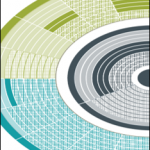February 26, 2020
Reem Nejdawi - Chief of Section, The UN Economic and Social Commission for Western Asia (ESCWA)
Rami Zurayk - Chairperson and Professor, The American University of Beirut
Fidele Byiringiro - Economic Affairs Officer, The UN Economic and Social Commission for Western Asia (ESCWA)
Minerva Sadek - Research Assistant, The UN Economic and Social Commission for Western Asia (ESCWA)
 In 2017, the United Nations Economic and Social Commission of Western Asia (ESCWA) published the “Arab Horizon 2030: Prospects for Enhancing Food Security in the Arab Region,” which highlighted the region’s rising plight of the triple burden of malnutrition, i.e., undernutrition, overnutrition and nutrient deficiency, and called for a comprehensive monitoring of food security. ESCWA proceeded with the development of an Arab Regional Food Security Monitoring Framework to help countries assess their food security situation taking into account its complexity and multidimensionality notably along its accepted 4-prongued definition. The Framework was developed within the course of the implementation of a project on “Promoting Food and Water Security Through Cooperation and Capacity Development in the Arab region” supported by the Swedish International Development Cooperation Agency (Sida) and in collaboration and partnership with Arab countries, the Arab Organization for Agricultural Development (AOAD), the Food and Agriculture Organization (FAO), academia and other experts.
In 2017, the United Nations Economic and Social Commission of Western Asia (ESCWA) published the “Arab Horizon 2030: Prospects for Enhancing Food Security in the Arab Region,” which highlighted the region’s rising plight of the triple burden of malnutrition, i.e., undernutrition, overnutrition and nutrient deficiency, and called for a comprehensive monitoring of food security. ESCWA proceeded with the development of an Arab Regional Food Security Monitoring Framework to help countries assess their food security situation taking into account its complexity and multidimensionality notably along its accepted 4-prongued definition. The Framework was developed within the course of the implementation of a project on “Promoting Food and Water Security Through Cooperation and Capacity Development in the Arab region” supported by the Swedish International Development Cooperation Agency (Sida) and in collaboration and partnership with Arab countries, the Arab Organization for Agricultural Development (AOAD), the Food and Agriculture Organization (FAO), academia and other experts.
Developing the Framework
The development of the framework involved consultations with more than 200 experts and a comprehensive review of the literature at global and regional levels and it allows tracking food security at different spatial levels; covers its four dimensions; accounts for individual and household food security and supports the monitoring process of the Sustainable Development Goals (SDGs) among others. The framework provides ex post or outcome as well as ex ante or observed information and uses global indicators while catering to regional specificities.
The Monitoring Framework considers that food security and nutrition can be expressed as a function of a multitude of indicators with only five to six indicators under each dimension being consequential. In choosing these indicators, it was ensured that they are measurable, are part of the SDGs or the FAO suite of food security indicators, are relevant to the Arab context and are available for at least 50 percent of the countries or the population or both. The selected indicators were split into a core pillar containing 3 ex post indicators, i.e., prevalence of undernourishment, moderate or severe food insecurity and obesity, and the four food security dimensions containing 21 ex ante indicators distributed almost equally among the dimensions.
Presenting the data through a dashboard
The framework is presented as a dashboard containing two overlapped doughnut charts with scores and a table with the raw food security data, years and trend. The inner doughnut chart comprises core indicators while the outer doughnut chart contains food security indicators along its four dimensions as shown below. The indicators values were normalized to move between 0 and 10, respectively from poor to good performance and shown as 10 rings in each doughnut. The normalization of indicators for which a low value indicates good performance was reversed (R), e.g. undernourishment.
This framework is mechanistic as indicators are set and distributed across the food security pillar and dimensions with the interpretation of results following a determined approach: first, evaluate the core indicators to assess the overall food security and nutrition status (outcome), and, second, examine the dimension indicators to identify hotspot areas. The user needs only input regional, national or, if available, sub-national data into a provided Excel template to generate the chart and table as below for the Maghreb subregion.


Interpreting results
The Maghreb chart above shows good performance for the undernourishment core indicator, i.e. low population affected, with an improving trend between 2010 and 2016. The other two core indicators, food insecurity experience and obesity, show poor performance. Good, moderate and poor performance are highlighted respectively with a “sun”, a “cloudy sun” or a “thunderstorm” while a “question mark” means no-data. Hotspots among the causal indicators include low yields, agriculture water use, poverty, unemployment, stunting, wasting, anaemia among women as well as political stability.
The table provides the statistical data for 2010 and latest year available (which is variable) and compared to the Arab average. It shows declining trends for obesity, unemployment, inflation, anaemia among women, political stability and production variability. A forthcoming ESCWA publication describing the framework suggests potential action areas that could be built upon by stakeholders.
The proposed Monitoring Framework was endorsed by the Executive Council of AOAD in March 2019. Selected agricultural and statistics experts from most Arab countries have already received in-depth training in Tunis and Beirut while the full publication should be available soon on ESCWA’s official publication website.
The framework is based on the forthcoming ESCWA publication “Tracking Food Security in the Arab Region,” which was prepared by ESCWA in collaboration and partnership with AOAD and FAO. Other ESCWA staff members contributed also to the drafting of the publication.
